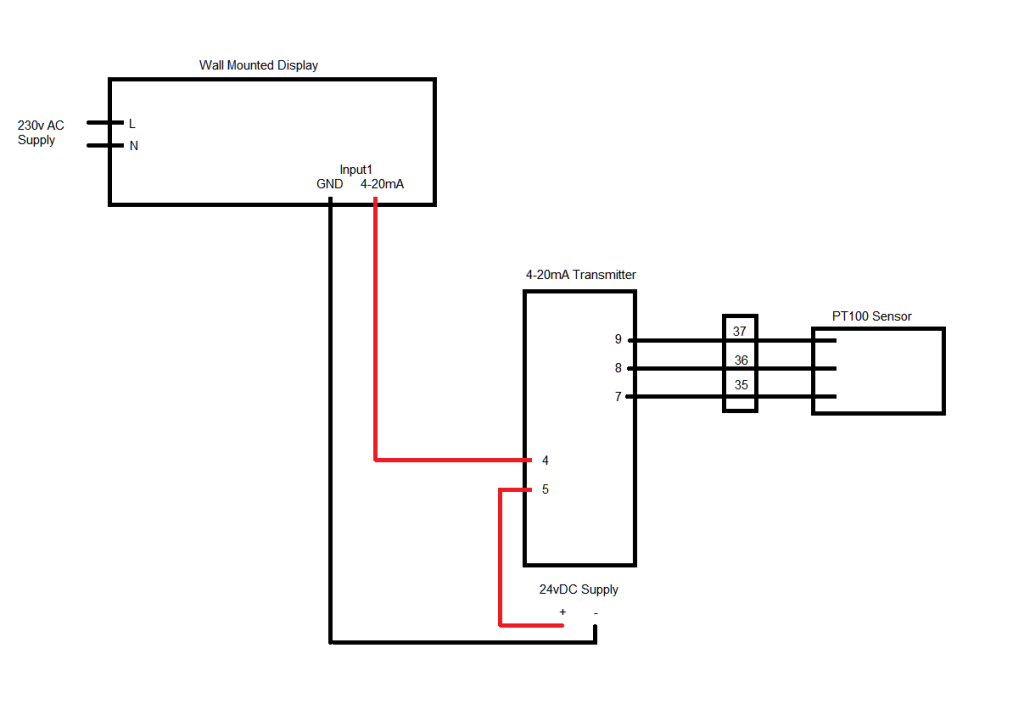Hi,
I'm a little confused with something and hopefully you guys will be able to help.
I have been given a little project to do, but I am confused by this wiring diagram:

I have a:
PT100 sensor
4-20mA transmitter
Digital Display (temperature)
From the above circuit diagram, I see that the PT100 sensor will go in to terminals 7, 8, 9.
The transmitter needs a 24vDC supply, and the digital display gets it signal from two wires from the transmitter.
- The power supply (Vs) looks like it uses terminal 5 for the positive, but I don't understand the rest. Where do I connect 0V to, and where do I connect the cable with two wires in to feed the display?
Thanks a lot
I'm a little confused with something and hopefully you guys will be able to help.
I have been given a little project to do, but I am confused by this wiring diagram:

I have a:
PT100 sensor
4-20mA transmitter
Digital Display (temperature)
From the above circuit diagram, I see that the PT100 sensor will go in to terminals 7, 8, 9.
The transmitter needs a 24vDC supply, and the digital display gets it signal from two wires from the transmitter.
- The power supply (Vs) looks like it uses terminal 5 for the positive, but I don't understand the rest. Where do I connect 0V to, and where do I connect the cable with two wires in to feed the display?
Thanks a lot


